What is the difference between arthritis and arthrosis?
Many people confuse names because they don’t know the difference.
These diseases are characterized by joint damage, but there is a significant difference between them.
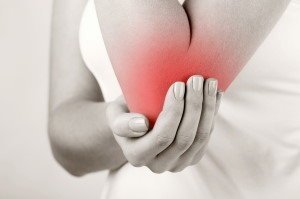
What's the difference
Arthritis can affect any joint. In many cases, this disease is the result of joint lesions. This is one of the consequences of improper, untimely treatment of arthrosis.
To better understand both diseases, the differences are specific to each:
- Arthritis refers to various inflammatory changes in the joints;
- The more appropriate name for the second disease is osteoarthritis. It differs in that the lesion affects cartilage tissue.
Mechanism of 2 disease course
Arthritis - Classification of Varieties
Arthritis is the name given to a specific group of joint diseases.
It is characterized by the manifestation of swelling, inflammation. The inflammatory process leads to the production of enzymes that have a detrimental effect on the joint and eventually destroy it. In addition to inflammation, an adhesive appears in the joint itself - fibrin.
This is a resting pain that can be relieved with exercise. When you get up in the morning, you feel unyielding to eliminate that feeling that you need to dispel. Most often, the disease affects the upper and lower limbs.
The disease has a division: degenerative or inflammatory. This classification is based on the nature of the disease.
A disease in which articular cartilage is involved is called degenerative arthritis. Cartilage is used to connect and move bones.
There are several types:
- Osteoarthritis;
- Traumatic arthritis.
The inflammatory course of the disease is not characterized by cartilage but by connective tissue damage. Inflammation occurs inside the joint capsule.
Divide into the following types:
- Caused by infection;
- Rheumatic;
- Reactive plan;
- Gout.
To understand the difference between arthritis and arthritis, it is necessary to find out if osteoarthritis is not similar to other diseases covered by the concept of arthritis.
Stages of arthrosis progression
Osteoarthritis, but more precisely and more accurately it will be called osteoarthritis, it is a chronic change in the joints that deforms over time. The main cause of deformity is irreversible damage to cartilage tissue.
The peculiarity of the disease is that the destructive processes affect the cartilage tissues and then their integrity is damaged.
Arthrosis is a disease in which there is mechanical wear on the cartilage in the joint until it completely disappears. The bones are exposed and their friction is already happening.
The disease is long-term, chronic.
There are two stages in its development:
- Primary, present in 42% of patients. It does not occur due to joint injury, but due to excessive physical exertion or hard work. Men who have been engaged in manual labor for a long time are ill.
- Secondary, it develops in more patients than the primary stage and is associated with the consequences of trauma, which triggers the mechanism of destructive processes.
Causes and Differences
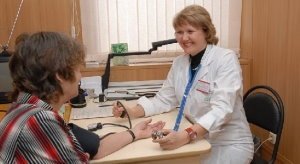
Causes of Arthritis
The main preconditions of the disease can be ranked:
- Excessive exercise or work;
- Various infectious processes, including latent processes;
- Any allergic reaction;
- Permanent damage to the same joint;
- Metabolic disorders;
- Vitamin deficiency;
- Immune system disorders;
- Post-traumatic syndrome;
- Hereditary predisposition.
Causes and main signs of arthrosis
The background to the disease is not well known. Only people of retirement age are sick. The disease is influenced by age characteristics.
Trauma is considered another form of arthrosis. The joint with him should be treated. If this does not happen, signs of arthrosis damage will appear after a few years.
Differences in clinical appearance and symptoms
Let's move on to a more detailed examination of the symptoms that accompany joint disease.
Symptom of pain. In the initial stage, arthrosis is not characterized by a constant strong manifestation of pain. It only appears with intense effort or joint movement. When the load decreases or the movement stops, the pain goes away.
A person does not attach importance to such manifestations, allows symptoms to worsen and the disease to progress.Pain begins to appear even with a light effort. It decreases when one shows a comfortable posture.
Systemic painful pain occurs in the affected joints. This can be associated with long walks, exercise or physical activity.
Pain can sometimes be felt after a long rest in the affected joint. When it comes to arthritis, the pain manifests itself both at rest and during physical activity.
This disease afflicts a person in the hours before dawn. Severe pain occurs between 3 and 5 hours.
Crisp sound. Dry cracking is associated with arthritis. As the cartilage tissue breaks down, friction of the bone begins. The sound is roughened and intensified, manifested even by the slightest movement of the diseased joint.
Show the rigidity of the movement. Arthritis severely restricts the movement of both affected joints and reduces the overall mobility of the entire skeleton.
A disorder of the shape of a diseased joint. Both arthritis and arthrosis can deform the joint. But the deformation process itself takes place in different ways. There is no redness or inflammation in arthrosis. The joint is not hot to the touch. Deformation is also called cold. Swelling can be expressed as the disease worsens, accompanied by painful pain. 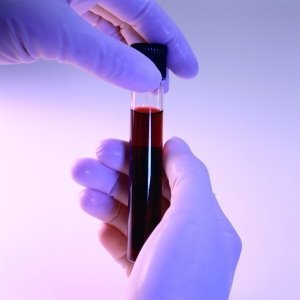 Arthritis changes the joint, becomes hot, redness and swelling appear. The pain is acute when the affected area is touched, nodular formations can be felt.
Arthritis changes the joint, becomes hot, redness and swelling appear. The pain is acute when the affected area is touched, nodular formations can be felt.
What the blood test reveals. The blood count of arthrosis does not change. An increase in the number of leukocytes and a sharp increase in ESR are signs of inflammation that can be observed in arthritis. Increased leukocytosis indicates that the body is susceptible to infections and inflammation occurs inside.
In biochemical blood tests for arthritis, the number of markers of inflammation is increased and they do not change significantly in arthrosis.
Location of pathology. Osteoarthritis affects large joints in the body. These will be the knees, hips and spine. The names of the disease come from this: gonarthrosis (damage to the knee joint), coxarthrosis (the hip joint is affected), spondyloarthrosis (the pathology is localized in the spine).
Arthritis called rheumatoid arthritis, lack of morning (poor) mobility - a sign of rheumatoid arthritis. After waking up, a person feels stiffness in the hand area. The wrist joints are affected individually and both at the same time. In rheumatoid or psoriatic arthritis, there may be signs of inflammation in the joints of the fingers - swelling (swelling) and redness of the skin.
There are several other signs that can recognize arthritis.
If a finger on the upper or lower limb swells and turns red, arthritis is suspected. Arthritis manifests as severe pain in the knees and ankles. Pain can also occur in the big toes.
This is accompanied by swelling and redness of the joint. Symptoms of pain appear regularly, suddenly increase, and then disappear. Infectious arthritis is accompanied by increased body temperature, general fatigue, and a person sweats and hurts with sweat, chills, all bones.
Inflammatory processes affecting the joints have a negative effect on important internal organs, the heart, kidneys and liver.
Other signs of arthrosis include
- Aseptic necrotic areas;
- Strong muscle tension;
- Partial immobilization of affected joints;
- Slow absorption of cartilage tissue, bones and friction between them;
- Inflammatory processes in the tissues surrounding the painful joint.
Effect of patient's gender and age on the presence of joint disease
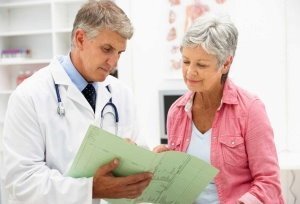
Who is affected by arthritis
The percentage of cases of arthritis is low, accounting for 2% of the world’s total population.
Women “35-50 years old” are more prone to it.
Small joints are more often affected.
Who is preceded by the disease
Osteoarthritis does not spare the elderly, whether they are women or men. After retirement, retirees suffer from an illness. The number of cases is about 20% of the total population of the Earth.
Different diseases - different methods
Treatment professionals are called orthopedic traumas. Arthritis requires treatment by various professionals.
Arthrosis and how to treat it
Painful feelings are relieved for a short time with the help of anti-inflammatory drugs. But they have no effect on the course of the disease.
The main goal of treatment is to regenerate cartilage tissue. The main drugs that help with this are condoprotectors.
These medications can help you fight inflammation in the joints, regulate muscle metabolism, and repair damaged areas.
If conservative treatment does not give positive dynamics, arthroplasty may be used.
The point is that surgery is performed to replace a diseased joint. Arthrosis is a serious and incurable disease because the ongoing processes are irreversible.
The patient should follow the doctor's recommendations for proper nutrition and physiotherapy - this is a mandatory phase of treatment. Gymnastics, medication, therapeutic measures - all this leads to a positive effect.
What medications and prescriptions does the doctor give to the patient?
For non-simple circumstances, the specifications will be:
- Hormone therapy;
- Anti-inflammatory drugs;
- Analgesics;
- Manual therapy, massage sessions;
- Set of exercises;
- Physiotherapy - using ultrasound waves and thermal methods.
The complex course of the disease requires additional medications. Sometimes doctors insist on surgical removal of the problem.
Who needs the services of a surgeon? For patients whose completely destroyed joint cannot be repaired, a complete replacement is required. Depending on the degree of joint destruction, both full and partial replacement are used.
Treat Arthritis
It all depends on what form the disease has taken. The methods of therapy will be different, can be combined, changed, choosing what gives the desired result in the treatment.
Lifestyle recommendations:
- Proper nutrition,
- Avoid alcoholic beverages
- Decreased physical activity.
Among the drugs, antibiotics are prescribed and anti-inflammatory drugs are injected into the joint.
Moderate exercise and physiotherapy are helpful in treatment.
The most important thing during treatment is to remove the inflammatory process and improve the body's resistance. Vitamin preparations and dietary foods are used. Contains seafood, dairy and poultry.
Arthritis is a direct contraindication to sunbathing. Wearing high heels can aggravate the course of the disease, exclude it from the closet.
The disease prescribes its own prohibitions: alcohol, hard physical work, must be a thing of the past. Health is too expensive to ignore doctors ’recommendations!
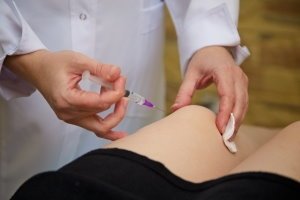
Predicted outcome of the disease
Diseases differ in their possible endings.
Arthritis can be completely cured if the cause disappears.
Osteoarthritis is a chronic, slow disease that has no chance of complete recovery.
Simple folk remedies
In addition to medication, it is helpful to use reliable recipes from traditional medicine. Often, even doctors advise their patients to combine traditional medicine with folk medicine. This speeds up the healing process.
When treating arthritis, it is important to rethink your daily routine and diet. These 2 basic lifestyle columns, if properly organized, can significantly affect the healing process.
Here are 6 rules you can follow:
- Follow the right diet. Adjust the menu to normalize the amount of nutrients, vitamins and microorganisms consumed per day.
- To normalize your diet, it’s a good idea to saturate your daily menu with fresh vegetables and fruits, it’s better to exclude salty foods altogether or use a little salt while cooking.
- Avoid hot spices in finished products and during home cooking.
- Refuses to eat foods from which a particular person is gaining weight quickly. These foods include high-carbohydrate foods.
- It is important to set the weight. If you have extra pounds, you should get rid of them as soon as possible because it has a negative effect on your lower limbs due to the high load.
- Stop drinking alcohol because it is negative for the body and promotes the rapid development of drug rejection.
Among the folk remedies, recipes are especially effective:
- The use of birch buds is useful in the treatment of arthritis. Pour with boiling water and bring the resulting mixture to a boil, wrap in a warm cloth and allow to cook. Take half a glass three times daily before meals.
- The roots of burdock are crushed, placed in a bottle and poured with vodka. Stick in a dark place, shaking the contents of the container regularly. The resulting solution is smeared with the site where the pain is most intense.
Home Remedies and Eating Habits
In case of arthrosis, it is advisable to saturate the daily menu with fatty fish. The omega 3 acids in it quickly eliminate the inflammatory process, relieving pain. Alternatively, we recommend the use of fish oil, which is no less effective than oily fish.
Milk and dairy products are helpful, but skim foods are best. Cheese and cottage cheese should be sufficiently saturated with calcium. Your daily diet should include enough fresh fruits and vegetables.
In case of arthrosis, make sure that your body gets enough vitamins. To do this, it is useful to drink a vitamin. Preference should be given to drugs that have a complex effect. Some vitamins help others to be absorbed faster. There are complexes for sale that take this moment into account. This helps to ensure the rapid absorption of vitamins and the deposition of salt in the joints.
Proper nutrition, weight control, and constant monitoring of the condition of the skeletal system will allow you to cope with the disease but rule out relapses in the future.
Traditional medicine offers ways to fight the disease:
- Practice and exercise regularly. You don’t have to strain too much, the sport should be moderate and it can only bring joy to your performance.
- It is useful to swim or just do different exercises in the water.
- Compressions are effective. As the inflammatory process progresses, warm options are helpful and cold, such as ice, is suitable for relieving pain.
- Anti-inflammatory spas are especially useful in fighting the disease. Herbs such as eucalyptus, calendula, sandalwood oil, St. John's wort are suitable for them.
Recommended orthotics
Knee pads are used to fight these diseases. Patients who used them noted that they really helped them cope with the painful feelings, along with other ways to treat the disease.
The choice of devices is varied, so they choose a model that is appropriate for a particular patient, taking into account the course of their disease.
Each model has its own specific purpose. If you make a mistake while making a choice, the device will not work as it is simply impossible to wear.
A closed knee brace is a device that covers the lower limb around it. They are made of flexible material and provide an additional layer of insulation in some models. The option is good if the pain constantly occurs in different places. Their goal is to fully fix the knee of the foot. Provides significant relief while walking.
Open models have a cup cutout. They help with walking, relieve pain when bending the leg. They are useful for those who need to step up the stairs. The models have a rigid frame and are made of flexible material. These tools help maintain the shape and position of the foot.
Disease Prevention
As a preventative measure, you should ensure a healthy lifestyle. Moderate exercise is helpful. Quitting smoking and consuming alcoholic beverages significantly reduce the likelihood of developing these serious diseases.
It is much easier to prevent the development of any disease than to waste time, effort and money to treat it. When it comes to arthritis and osteoarthritis, it is helpful to treat all types of infectious diseases in a timely and complete manner for prevention; premature treatment of these diseases can cause serious problems in the lower extremities in the near future.
Make sure your body is getting enough of the various vitamins. Avoid hypothermia, dress appropriately for the weather. Make sure the joints are loaded to the maximum extent allowed. It should not be excessive. Overweight people. It is usually better to get rid of excess pounds as soon as possible because they negatively affect the condition of the whole body.
Diets should be designed to provide enough nutrients to the body.













































